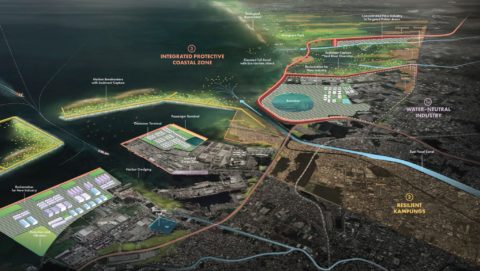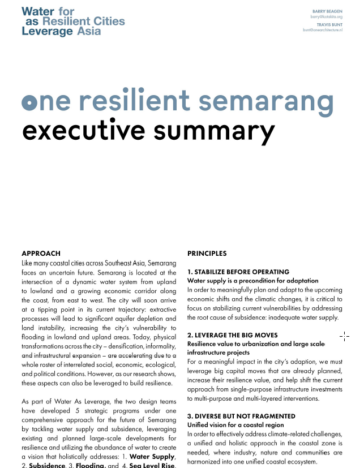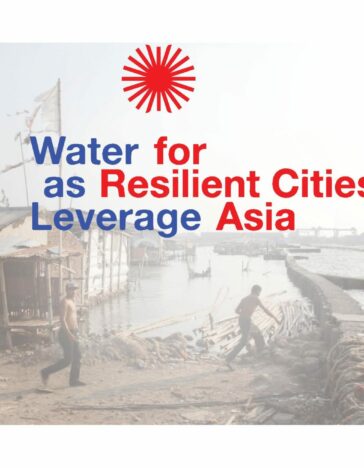Future proofing Cities in Asia: Water as Leverage for Resilient Cities in Semarang, Indonesia
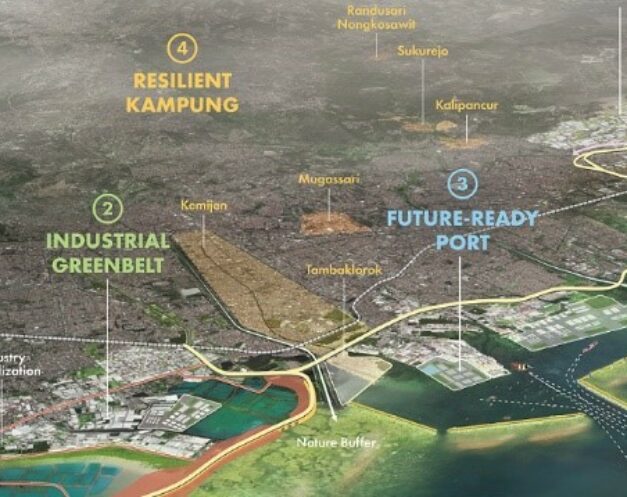
Wetlands International has joined the Water as Leverage for Resilient Cities: Asia initiative of the Netherlands Special Envoy for International Water Affairs, Henk Ovink as part of the ONE Resilient Semarang design team in the city of Semarang (Java, Indonesia). We bring with it our expertise from the adjacent Demak “Building with Nature” project as well as knowledge from participatory processes in Panama and management of other wetland regions worldwide. Through the inclusive, multi-stakeholder and integrated design approach, ONE Resilient Semarang has developed bankable concept projects for Resilient Kampungs, an Integrated Protective Coastal Zone strategy and sustainable water use for the industry in Genuk.
The complex challenges of urban water adaptation, are lacking an inclusive and holistic approach. Real innovation is needed to realise wise investment in urban water management as, after all, “it takes millions to invest billions wisely”. Under the leadership of the Netherlands Special Envoy for International Water Affairs, Henk Ovink, the Water as Leverage programme provides such an innovation. Its multi-stakeholder and multisectoral approach facilitates the development of bankable, sustainable innovations for climate resilience, thereby generating the necessary investments for integral urban water projects. These locally developed and supported projects will provide real and sustainable climate resilience in cities facing major water challenges made worse by climate change.
Design competition set-up
Water as Leverage started as a competition for the best integrated, multi-sectoral proposals to tackle the complex urban water problems in Chennai (India), Khulna (Bangladesh) and Semarang (Indonesia). For the competition, two design teams were selected for each city. Each challenged to develop the best proposals for bankable and implementable projects. These proposals were then connected to funding opportunities and (co-)financiers, such as AIIB (Asian Infrastructure Investment Bank) and FMO (The Netherlands Development Finance Company). These MDBs provide key input into the bankability during regional workshops in Singapore, while Partners for Resilience plays a key role as Knowledge Partner, assuring community involvement in project development.
The design process
Through a robust analysis and stakeholder workshops, the design teams develop their multi-million dollar water infrastructure project proposals. Based on their research and stakeholder engagement, the multi-sector ONE Resilient Semarang design team, led by ONE Architecture & Urbanism with Wetlands International, Deltares and the local NGOs Kota Kita and Hysteria, proposes a vision for the coastal part of the city that includes the restoration of a mangrove “Green Belt” and other blue-green infrastructure. This is coupled with planned harbour expansion, industrial areas and seawall-toll road that the Indonesian Government is already developing.
Illustration: the coastal vision for Semarang by the ONE Resilient Semarang design team, connected to the mangrove Green Belt of Demak (top)
Challenge: dealing with soil subsidence in Semarang
For anyone of the investments to be successful, the problem of soil subsidence must be tackled. Soil subsidence is not a new phenomenon for Semarang. Reports if its occurrence date back for more than 100 years. Elevation (levelling) surveys conducted by the Centre of Environmental Geology from 1999 to 2003 showed that substantial subsidence had occurred around Semarang Harbor, Pondok Hasanuddin, Bandar Harjo and Semarang Tawang Railway station. Results derived from GPS data show that, in general, subsidence rates in Semarang have an average rate of about 6 to 7 cm/year, with maximum rates up to 14-19 cm/year at specific locations. The impact of land subsidence in Semarang is visible in several forms, the broader expanse of (coastal) flooding also known as “rob flooding,” cracking and sinking of buildings and infrastructure and increased inland seawater intrusion. These processes have significant negative consequences for the quality and amenity of the living environment (e.g., health and sanitation conditions) in the affected areas.[2]
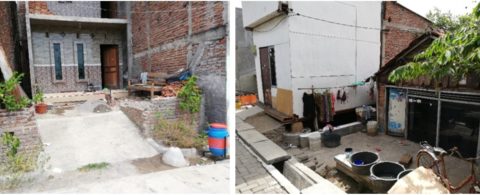
Soil Subsidence Water Dialogues
To address soil subsidence, a spin-off project was devised as part of the Building with Nature project in Demak. The “Soil Subsidence Water Dialogues,” will start working towards the objective of mitigating subsidence in Semarang & Demak’s coastal zone by 2030. The goal is to formulate a roadmap, involving all actors in the wider watershed, with the express aim of reducing groundwater extraction, recharging the underground aquifer and optimising surface water use and recycling.
[1] RVO, 2018: Water as Leverage for Resilient Cities: Asia, Call Document. https://english.rvo.nl/subsidies-programmes/water-leverage
[2] Heri Andreas, Hasanuddin Z. Abidin, Irwan Gumilar, Teguh Purnama Sidiq, and Bambang Yuwono. Adaptation and mitigation of land subsidence in Semarang, AIP Conference Proceedings 1857, 060005 (2017); https://doi.org/10.1063/1.4987088
Photo on the banner: Illustration of 2030 vision for Demak’s eroded coast with the city of Semarang on the right, as part of the Demak “Building with Nature” project.

